SSC, NASA and others expand communication possibilities in space and on Earth
Space Systems Command recently partnered with the NASA to launch a laser optical communications demonstration project that will help chart the future of space-based laser optical communications.
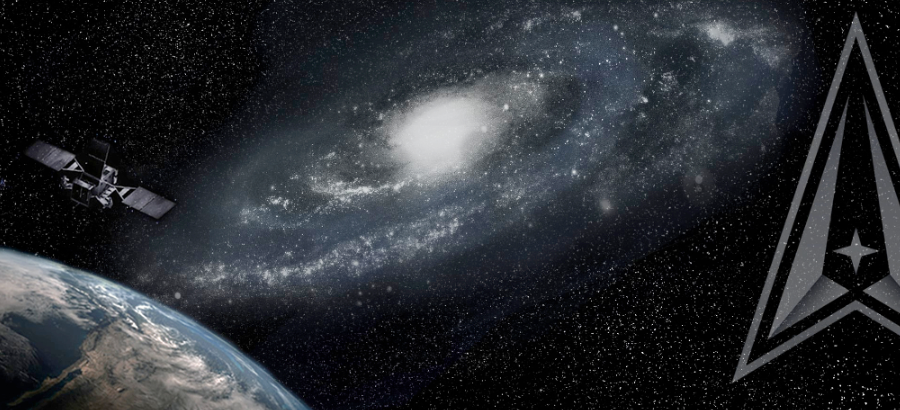
One of the payloads on the U.S. Department of Defense’s (DoD) Space Test Program Satellite 6 (STP Sat-6) that was built by Northrop Grumman that was launched on December 7, 2021, was a test project: NASA’s Laser Communications Relay Demonstration (LCRD), designed to communicate between geosynchronous orbit (GEO) and the surface of the Earth.

Lt. Col. Jonathan
Shea
Lt. Col. Jonathan Shea, director of the DoD Space Test Program, noted that the LCRD mission was a special collaboration with NASA, not an experimental project from the DoD Space Experiment Review Board, which evaluates and recommends projects to be launched using STP’s organic resources.
“NASA saw an opportunity, we were going to the right orbit, and they basically offered a collaboration with us,” Shea said. “It was a successful launch and we successfully executed the test and check-out campaign. We are committed to assisting partners like NASA to do these kinds of missions, and we’re watching with bated breath to see how their experiment goes, because there are lots of military applications for it.”
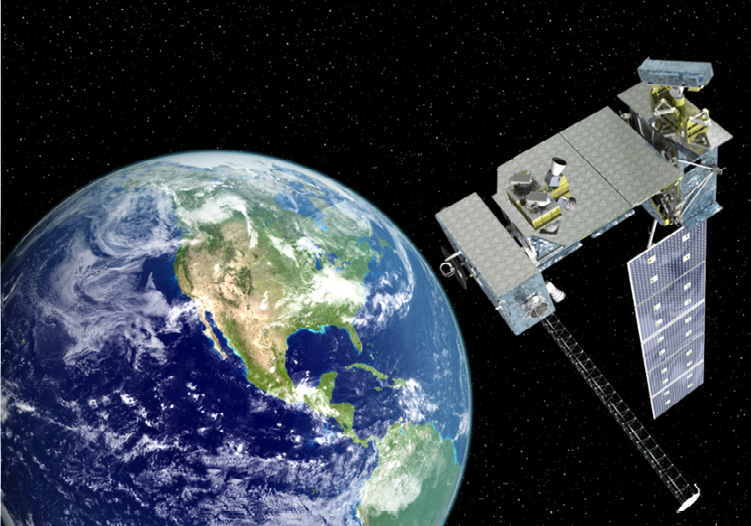
Artistic rendition of the STPSat-6 advanced spacecraft for the USSF,
NNSA and NASA. Image is courtesy of Northrop Grumman
Shea continued, “Laser communication is something the DoD is extremely interested in, so it’s about being able to help our partners, but at the same time, help the whole of the U.S. government better understand and test out laser communication systems – especially in space – which will help the entire space security infrastructure that we’re trying to build.”
“This isn’t STP’s only collaboration with NASA,” Shea noted. “This is one of multiple collaborations that the DoD STP has with NASA, including the team at the Johnson Space Center in Houston that is embedded in the International Space Station (ISS) program office, and produces special platforms that usually contain anywhere from six to 10 payloads that we can integrate directly into the ISS.”

Dr. Shantanu Gupta
“Optical communications use light as a means of transmitting data via lasers and allow for larger data transmissions and are more secure, making them attractive to commercial users as well as military applications, said Dr. Shantanu Gupta, chief engineer for optical communications with The Aerospace Corporation, an independent, nonprofit corporation operating the only Federally Funded Research and Development Center (FFRDC) for the space enterprise.
“You have a lot more bandwidth available to carry large amounts of data than traditional radio frequency (RF) communication channels,” – 10 to 100 times more”, Gupta said. “Current commercial state-of-the art RF links from Low Earth Orbit provide a couple of gigabits per second data rates, whereas optical communication data rates start here, with 100 gigabit per second optical links being deployed in commercial constellations — it’s a fatter data pipe.”
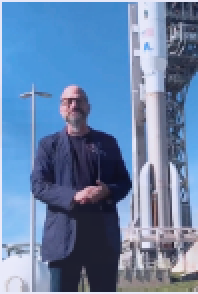
David J. Israel
“The underlying physics of it is, when you have the smaller wave lengths and higher frequencies that are in the optical part of the electromagnetic spectrum, it gives you the ability to carry more bandwidth to get the data advantage,” said David J. Israel, division architect for the Exploration and Space Communications Project Division at the Goddard Space Flight Center and principal investigator for the LCRD mission at NASA.
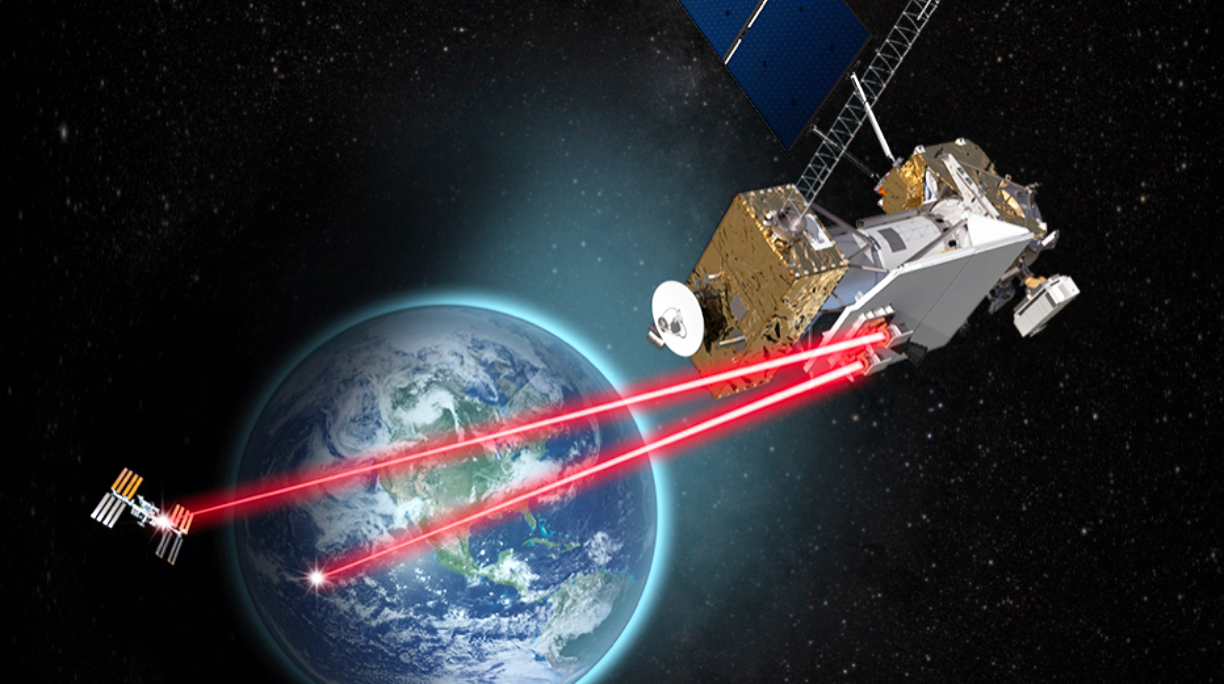
Artistic rendition of the LCRD, courtesy of NASA.
For commercial companies, laser optical communications are attractive because that ‘fatter data pipe’ provides the ability to handle more users and more data, Gupta said. Optical communications equipment also tends to be smaller and lighter, making it easier and less expensive to put on the spacecraft and launch into orbit. That can lead to systems with more resiliency, as it becomes more economical to launch networks of satellites.
The traditional RF spectrum is fairly narrow and therefore congested, and is coordinated and licensed but the laser communication spectrum not only has much more bandwidth available but isn’t regulated, Gupta said.

Eric Stroka
For military applications, “Optical is a more secure way of transmitting large amounts of data,” said Maj. Eric Stroka, STP program manager for the STP Sat-6 mission. “As technology has improved, people want to get more and more data from all the experiments and payloads in space, and [bandwidth] has increased dramatically on the ground - everybody’s used to gigabyte networks. In space, generally, RF is very, very slow. So it’s really hard to get down a large amount of data, and optical will improve that dramatically.”
“We’re trying to investigate more secure ways of sending data for disaggregated space architecture in the future,” Shea added.
“Laser communication in space is much, much narrower (than RF)” Gupta said. “Think of it like a laser pointer. You can’t actually see an RF beam, but it’s much wider and fatter and the farther out you go, it’s a very large footprint – so easier to detect it. You cannot do that with optical communication – or it is very, very hard. It’s about 1,000 to 10,000 times narrower than a traditional RF communication beam. It’s what is called in the military and defense circles as ‘low probability of intercept. In fact, you can most likely see the adversary is trying to sniff you because they will be close enough, like a couple of kilometers away. You cannot intercept it covertly – if you try to do that, there’s a high chance you’ll expose yourself. That’s not true with RF.”
Early attempts to develop laser optical communications go as far back as the late 1960s, but technological advancements in highly reliable telecom technology in the 1990s, including the development of fiber optics and fiber lasers, drove increased development and have made them more practical, Gupta said.
In addition to several military and government demonstration projects, optical communications are currently in use in some commercial applications, particularly in Europe, and now in commercial constellations being deployed in the U.S., Gupta added.
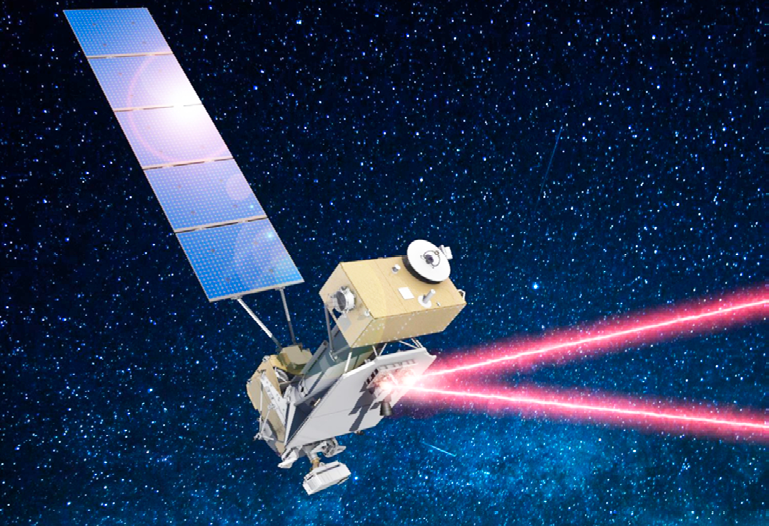
As mankind expands space exploration past geosynchronous orbit, laser optical communication will have a clear advantage over RF, Gupta said, due to the size, weight, power and data rate advantages.
However, in spite of the advantages of laser optical communication, RF also continues to evolve, and won’t be completely replaced by optical communications. Optical signals can’t penetrate cloud coverage, for example.
“Lasers are great when you don’t have any atmosphere or clouds,” Gupta said. “But most of us still live on Earth, not in space. Ultimately, the data has to comebto the ground, and getting it through the atmosphere, especially through clouds, is still a challenge.”
One way around that is to have ground stations in more than one location, called ground site diversity, Gupta said.
The LCRD will transmit data received from missions to two ground stations, located in Table Mountain, California, and Haleakalā, Hawaii, which were selected for their minimal cloud coverage, according to NASA. LCRD will test different cloud coverage scenarios, gathering valuable information about the flexibility of optical communications.
Following the successful launch last year, engineers at LCRD’s mission operation center in Las Cruces, New Mexico, activated the payload and prepared it to start sending test data over infrared lasers.
At the beginning of June, the LCRD started running experiments that will run for two years, Israel said: collecting data at different times of the day and night and over different seasons, analyzing the effects of the atmosphere on basic link performance.
Another set of experiments will focus on Delay and Disruption Tolerant Networking (DTN), to allow communication in ways a traditional Internet (IP) and Transmission Control Protocol (TCP) computer network protocols won’t support, Israel said.
Radiometrics uses radiowaves and the characteristics of radio frequency wave to get measurements to help with determining positioning, navigation and timing, Israel said. For example, one can measure the Doppler effect to help determine the relative velocity of an object. NASA also will be carrying out experiments in optometrics to do similar things using the LCRD.
“The entire idea is, over the course of the two year period, we’ll continue do basic characterization of link performance over atmosphere and determining ways to optimize operations,” Israel said. “How well can you predict when the weather’s going to be too bad to continue operating at a particular ground station? How quickly can you do a handover from one ground station to another?”
He continued, “Then we’ll start to layer more complexity into the demonstrations and experiments to combine these things, so as time goes on, it will be acting more and more like a full-on operational relay with multiple users, doing all the networking things and functionality.”
NASA also has a guest Experimenters Program where universities, researchers or companies can propose experiments for the LCRD, Israel said.
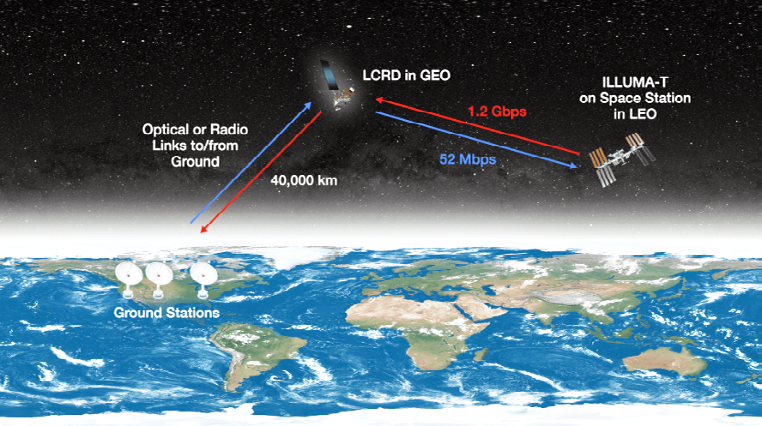
One of LCRD’s first operational users will be the Integrated LCRD Low-Earth Orbit User Modem and Amplifier Terminal (ILLUMA-T), a payload launching early next year that will be hosted on the International Space Station. The terminal will receive high-resolution science data from experiments and instruments onboard the space station and then transfer this data to LCRD, which will then transmit it to a ground station. After the data arrives on Earth, it will be delivered to mission operation centers and mission scientists, according to NASA.
Laser optical communications may be the next wave, but they will coexist with radio frequency, Gupta said. “We need to think of it as a space communication enterprise where individual technologies and platforms have their strengths and weaknesses and are deployed or used accordingly,” Gupta said. “Even in the ground transport network – not everybody or every business has fiber optic service to their home, it could still be cable or even DSL lines or T1 lines, but then ultimately they connect to some fiber optic hub that connects to the network.”
“There are constant debates and studies about at what point the NASA missions switch to optical instead of RF,” Israel said. “One point everybody agrees with, is that when we start to do more exploration at Mars, then using optical communication is the only way that we’re going to get high data rates back to Earth from Mars. There’s the huge distance, but because of the shorter wavelengths, optical allows the hardware you need on the spacecraft to be smaller and use less power, and that really gives you an advantage when you have to communicate from something you have to launch a long distance.”
NASA has been leveraging communications relay satellites since 1983 when the first Tracking and Data Relay Satellite launched. With relays, missions are not required to have direct line-of-sight to antennas on Earth, increasing communications coverage. LCRD creates a continuous path for data flowing from missions in space to ground stations on Earth, making a complete end-to-end system.
Additionally, LCRD’s ability to both send and receive data from missions and the ground stations makes the system two-way. Together, these capabilities make LCRD NASA’s first two-way, end-to-end optical relay, according to NASA.
Space Systems Command (SSC) is the U.S. Space Force field command responsible for rapidly developing, acquiring, equipping, fielding and sustaining lethal and resilient space capabilities. SSC mission capability areas include launch acquisition and operations, communications and positioning, navigation and timing (PNT ), space sensing, battle management command, control and communications (BMC3), and space domain awareness & combat power. SSC is headquartered at Los Angeles Air Force Base in El Segundo, California
Contact Space Systems Command at SSC@spaceforce.mil

